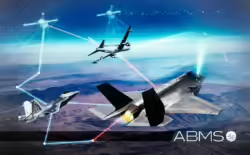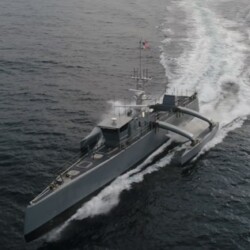Kathleen Hicks, Deputy Secretary of Defense
Technological change in warfare is constant, but AI represents a fundamental shift—a “transformative technology”—as Deputy Secretary of Defense Kathleen Hicks stated in 2023. This shift demands more than adaptation; it requires a rethinking of military power structures, command dynamics, and our approach to control and decision-making.
Today, AI isn’t merely a tool to improve efficiency; it’s a force capable of reshaping strategic advantage and accelerating the tempo of operations in ways previously unimaginable.
Redefining Situational Awareness – The Power of Artificial Intelligence
In a domain where seconds can determine outcomes, situational awareness is no longer about passive observation; it has become an anticipatory, proactive force. AI’s potential here is profound, as former JAIC Director Lt. Gen., USMC (Ret.) Michael Groen noted:
“AI-enabled systems can process information at machine speed, helping commanders understand the battlespace more quickly and completely than ever before.”
With AI, defense systems can synthesize disparate data sources—satellite imagery, sensor data, social media chatter—to provide actionable insights before threats materialize.
 |
Practical Example: Project Maven exemplifies AI’s real-time value. Using computer vision and machine learning, the project has processed millions of hours of drone footage, allowing analysts to identify objects and potential threats in minutes rather than hours. The National Geospatial-Intelligence Agency’s (NGA) AAA initiative builds on this, leveraging AI to detect subtle environmental changes, advancing the capability to interpret patterns that signal hostile intent. |
This proactive intelligence allows leaders to shift from reaction to anticipation, equipping commanders with the insights needed to control the battlespace rather than respond to it.
Decision Superiority – AI as a Strategic Partner in Command
AI’s role in decision-making redefines a realm traditionally reserved for human judgment. Today, AI doesn’t replace commanders; it enhances their scope and speed. As General Charles Q. Brown Jr., Air Force Chief of Staff, said, “AI will not replace human decision-makers but will provide commanders with enhanced understanding and faster options development.” With AI, leaders gain a tactical advantage in rapidly processing data, forecasting outcomes, and determining the best courses of action.
| Practical Example: The Air Force’s Advanced Battle Management System (ABMS) illustrates this. During a 2020 simulation, ABMS used AI to connect sensors across multiple services, reducing decision-making time from minutes to seconds and providing commanders with viable tactical options during a simulated attack. By streamlining the OODA loop (Observe, Orient, Decide, Act), AI transforms decision-making into an accelerated, data-rich process. |
 Source: https://media.defense.gov/ |
Autonomous Systems – Expanding the Battlefield Beyond Human Limitations
Autonomous systems represent not only a technical leap but an entirely new operational capability. These AI-driven assets—whether unmanned aerial vehicles (UAVs), autonomous surface vessels, or robotic ground vehicles—operate in high-risk, high-demand environments without placing human personnel in harm’s way. As DIU Director Michael Brown said,
“Autonomous systems allow us to project force without projecting vulnerability.”
Practical Examples:
|
 Source: https://www.darpa.mil/ |
These capabilities extend operational reach, but they also challenge us to rethink control and accountability. Autonomous systems offer new advantages, but leaders must carefully define the parameters of their deployment to ensure alignment with ethical principles and strategic objectives.
Cybersecurity – AI as the Vanguard of Digital Defense
Cyber warfare is increasingly a primary theater of conflict, with attacks that evolve as fast as the technology countering them. AI is essential in defense against these machine-speed threats. As Commander of U.S. Cyber Command, Gen. Paul Nakasone stated,
“AI is not optional in this domain—it’s essential.”
The Defense Innovation Unit’s Automated Security Validation and Remediation (ASVR) project demonstrates AI’s cyber defense potential. This system continuously monitors networks, identifying and responding to threats at speeds no human team could match. During a 2022 pilot, ASVR neutralized zero-day vulnerabilities before they could be exploited, showcasing AI’s ability to mitigate risks in real-time.
Ethical Boundaries and Global Responsibility – A Strategic Imperative
The rise of AI in defense isn’t just a strategic matter; it’s an ethical one. Secretary of Defense Lloyd Austin highlighted this imperative:
“We must lead in both the development and responsible use of AI. Our adversaries will not be constrained by the same ethical considerations.”
To that end, the DoD’s AI Ethical Principles emphasize responsible use, equitable impact, transparency, reliability, and governability.
Key DoD AI Ethical Principles:
| Responsible: | Human judgment remains central to AI use. |
| Equitable: | Mitigating unintended biases is essential. |
| Traceable: | AI processes must be transparent and auditable. |
| Reliable: | Systems must be safe, secure, and effective. |
| Governable: | AI systems should avoid unintended consequences. |
Adherence to these principles is essential to maintain the global leadership that aligns AI capabilities with democratic values and international stability.
Future Trajectories – Building a Strategic AI Framework
AI’s trajectory in defense hinges on the creation of a strategic framework that aligns technological capabilities with national security goals. As DARPA Director Stefanie Tompkins noted,
“We’re moving beyond asking what AI can do, to asking what AI should do to advance our strategic objectives while upholding our values.”
Current Strategic AI Initiatives:
-
- Project Convergence (Army): Testing AI-enabled battlefield networks.
-
- Project Overmatch (Navy): AI-enabled distributed maritime operations.
- Skyborg Program (Air Force): Developing autonomous “wingman” support.
Balancing speed with accuracy, autonomy with oversight, and advantage with accountability is a challenge that defense leaders must rise to meet. In embracing AI, we’re not just adding tools to our arsenal; we’re redefining power, control, and human agency in modern warfare.
Owl Cyber Defense – A Trusted Partner in AI-Enabled Defense
As AI continues to reshape defense, Owl Cyber Defense is committed to supporting military and intelligence agencies in harnessing these technologies with security, precision, and integrity. Our cross-domain solutions and advanced data diodes are designed to ensure secure, reliable data transfer across classified and unclassified networks, aligning with DoD Zero Trust guidelines to minimize risk while enhancing operational efficiency.
The two big advantages that CDSs provide to AI are:
1) increasing the available data to the AI engines in classified environment – AI is only as good as the data it can receive, and
2) allowing the results of the AI to be shared and collaborated on – across agencies and with mission partners.
By integrating Owl’s secure data transfer solutions with AI, defense organizations gain the confidence to deploy advanced AI tools across operational domains—in situational awareness, decision support, or autonomous systems—while maintaining the highest standards of security and compliance. At Owl, we enable warfighters to leverage AI-driven capabilities responsibly, ethically, and strategically, delivering decision advantage where it matters most.
To learn more, download our free white paper: Enabling & Securing AI in Defense with Cross Domain Solutions

